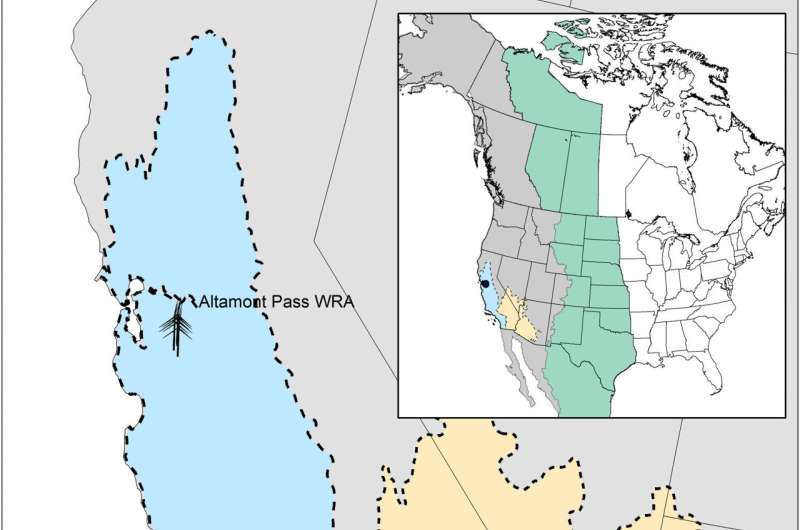April 25, 2022 report
Analyzing bird population declines due to renewable power sources in California

A team of researchers affiliated with a large number of institutions in the U.S. has attempted to determine the vulnerability of bird populations to alternative energy production. In their paper published in the journal Royal Society Open Science, the group describes studying the impact on bird populations in California.
While touted as green technology, alternative energy sources are not always Earth friendly. Production of solar panels, for example, results in pollution emitted into the environment. More widely known are the adverse impacts of wind and solar farms on animals, particularly birds. Birds can be killed when they try to fly through the rotating blades of wind turbines and they can die from overheating when they fly over large solar farms. They can also die due to displacement from their natural environment. In this new effort, the researchers veered from simply counting the number of birds that are killed by alternative power sources and looked instead to gauge the impact of the combined toll that alternative power plants are taking on populations of vulnerable bird species in California.
To assess the impact on birds across the state, the researchers chose 23 species that are known to be at risk when venturing near alternative energy power plants. They collected data from prior studies involving ecological and conservation efforts and engaged in feather-collecting outings to several sites across California and then identified and counted each. They also used species range maps along with migration flyway data and bird conservation data. They also obtained data on the placement, numbers, types and sizes of alternative energy plants in California. They then analyzed the data they amassed and use multiple techniques to determine the impact of bird deaths by species from both solar and wind powered farms. One such technique involved applying a Markov chain Monte Carlo application along with a Bayesian hierarchical modeling framework.
The researchers found that of the 23 species they studied, 11 experienced population declines of at least 20% due to exposure to alternative energy plants. They also found evidence of dangers to several populations due to harm done to migration networks, threats that go far beyond the location of plants.
More information: Tara J. Conkling et al, Vulnerability of avian populations to renewable energy production, Royal Society Open Science (2022). DOI: 10.1098/rsos.211558
Journal information: Royal Society Open Science
© 2022 Science X Network



















